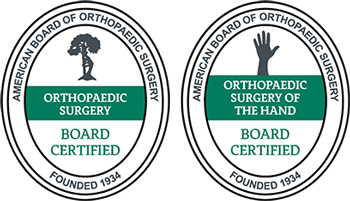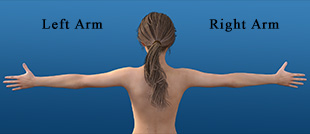Endoscopic vs. Open Carpal Tunnel Release: Which Surgery Is Right for You?
Carpal tunnel syndrome (CTS) is a common wrist condition that causes pain, numbness, or weakness in the hands and wrists due to nerve compression. These symptoms can significantly affect daily life and make it difficult to perform tasks that require fine motor skills, such as typing, getting dressed, or even holding a cup of tea. Surgery is often required when conservative treatments fail to provide relief and includes one of two options: endoscopic carpal tunnel release or open carpal tunnel release.
It’s important to choose the right surgical method based on your specific needs and circumstances, including the severity of your symptoms, your overall health and lifestyle, and the potential risks and benefits of each procedure. Consulting with a health care professional at The Hand and Wrist Institute is the best way to understand which option is best for you. In this article, we explore the basics of CTS and the two surgical options available.
Contents
Understanding Carpal Tunnel Syndrome

person holding hands of another person by Towfiqu barbhuiya is licensed with Unsplash License
CTS occurs when the median nerve, which runs from the forearm into the hand, gets compressed at the wrist. Repetitive hand movements, such as typing a lot or playing sports that involve repetitive hand motions, can cause carpal tunnel syndrome. Other factors include previous wrist injuries, medical conditions such as diabetes or arthritis, and even pregnancy-related swelling. The main symptoms include numbness, tingling, and pain in the thumb, index, and middle fingers, which can cause weakness in the hand. Early diagnosis and treatment are key to preventing long-term nerve damage and restoring proper hand function.
What Is Endoscopic Carpal Tunnel Release?
Endoscopic carpal tunnel release is a minimally invasive surgery designed to relieve pressure on the median nerve in the wrist. With the patient under local anesthesia, our specialist team at The Hand and Wrist Institute makes a small incision in the wrist or palm and inserts a thin tube called an endoscope, equipped with a tiny camera and light, through the incision. This allows the surgeon to see inside the wrist and guide the necessary tools to cut the transverse carpal ligament, which is compressing the median nerve.
This procedure causes less tissue damage than traditional open surgery, which means you can often enjoy benefits like reduced scarring, less postoperative pain, and faster recovery times. Patients typically experience a faster return to normal activities and a quicker healing process overall. But it’s not always the best option for all cases of carpal tunnel.
What Is Open Carpal Tunnel Release?
Open carpal tunnel release is a surgical procedure designed to alleviate pressure on the median nerve in the wrist. With the patient under local anesthesia, our specialist team makes a 2- to 3-inch incision in the palm to see and cut the transverse carpal ligament. This relieves the compression on the median nerve.
This traditional approach gives the surgeon a clear view of the carpal tunnel structures, but it generally involves a longer recovery period, more postoperative pain, and larger scars than the endoscopic method. We often recommend the open method for patients with more severe cases of carpal tunnel syndrome, those with anatomical variations, or when previous surgeries have been unsuccessful. While the endoscopic method offers reduced scarring and a faster recovery, the open method provides a more straightforward and reliable approach for complex cases.
Comparing the Two Procedures
Here are the differences between the two procedures at a glance:
Factor |
Endoscopic Carpal Tunnel Release |
Open Carpal Tunnel Release |
Efficacy |
Both methods are effective in relieving symptoms | Both methods are effective in relieving symptoms |
Incision Size |
Small (less than half an inch) | Larger (2-3 inches) |
Recovery Time |
Quicker recovery, often within a few weeks | Longer recovery, several weeks to months |
Scarring |
Minimal scarring | More noticeable scarring |
Postoperative Pain |
Generally less pain | Typically more pain |
Risks and Potential Complications |
Slightly higher risk of nerve damage, and possible temporary nerve irritation | Lower risk of nerve damage, and potential for longer-lasting scar discomfort |
Suitability |
Best for mild to moderate cases | Better for severe or complicated cases |
According to a study in the National Library of Medicine, while endoscopic techniques have shown more positive functional results early on, there are still concerns about the potential for nerve, vessel, and tendon injuries. However, this has yet to be proven. Anecdotal evidence shows that more patients report greater satisfaction with endoscopic surgical approaches than open techniques. Fewer surgeons use endoscopic techniques, but there is a lot of evidence to suggest that both approaches are safe and effective.
Which Surgery Is Right for You?
Choosing between endoscopic and open carpal tunnel release depends on several factors, such as the severity of the condition, patient health, lifestyle, and personal preferences. For mild to moderate cases, we often prefer the endoscopic method because of its minimally invasive nature, which usually means a quicker recovery and less postoperative pain.
However, the open method may be more suitable for severe or complex cases as it allows the surgeon a clearer view and more room to work. Because of its comprehensive approach, patients with specific health conditions or previous wrist surgeries might benefit more from the open procedure. Consult with your health care provider to make an informed choice based on your unique health status and needs.
Take the Next Step With The Hand and Wrist Institute
Both surgeries are effective and offer relief from the symptoms of carpal tunnel syndrome. Which is best depends on the severity of your symptoms as well as your overall health, lifestyle, and preferences. If you have a mild case, you may prefer a minimally invasive procedure like endoscopic surgery to ensure faster recovery and less discomfort. Open surgery may be required if you have a severe or recurring case.
Consulting with a health care provider, such as a carpal tunnel syndrome doctor at The Hand and Wrist Institute, can provide personalized guidance based on your specific needs. Contact us to schedule an appointment or learn more about our specialized treatments for carpal tunnel syndrome.

























